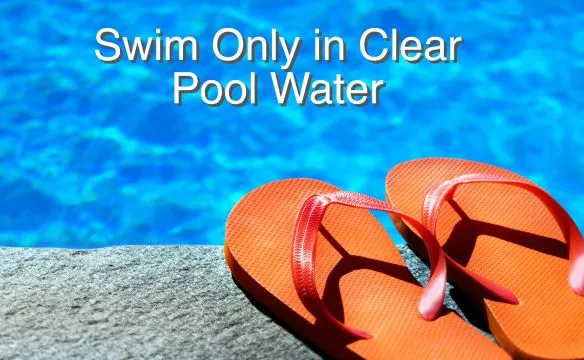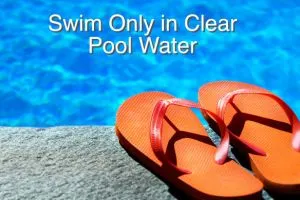
- Share on Facebook67
- Share on Pinterest
- Share on Twitter
Do you know what makes your eyes red at the pool? A new report from the Centers for Disease Control and Prevention (CDC) reveals it’s not just chemicals.
According to the CDC report, the true culprit behind itchy, red eyes is a derivative of ammonia called chloramine. Chloramine is a mixture of nitrogen and chlorine. Where does the nitrogen come from? Urine.
That’s right, your eyes are red at the pool because too many children (and a surprising number of adults) have peed in the pool. The CDC report states that if a pool is cloudy or has a strong “chlorine” smell, avoid it because it could spread water-borne diseases.
If that isn’t reason enough to avoid a cloudy pool, these four other reasons are sure to convince you:
Cloudy pools can cause UTIs
Cloudy pool water is often caused by dirt, bacteria and other contaminations. One unpleasant side effect of E. coli is an increased risk for urinary tract infections. Just one infection can increase the bacterial content in the urinary tract and offer a lifetime of unpleasant and recurring infections.
That chlorine smell? It’s not what you think
According to the CDC report, when you smell a heavy scent of chlorine, its actually the more dangerous ammonia product called chloramine. A high chloramine content in the pool indicates a pool that is contaminated with sweat, blood, feces, urine, sunscreen, oil, dirt, spit, and a variety of other nasty contaminants.
It’s easier to drown
Cloudy pools block visibility, which make drowning easier. Drowning can occur in under two minutes, and a drowning person is difficult to spot in a cloudy pool. In most cases, a drowning person barely struggles and can die within just a foot or two of another person.
You can catch a stomach bug
E. coli is the most common bacteria found in swimming pools as it is directly transmitted through human feces. Aside from viruses, E. coli is the most common cause of stomach bugs. An E. coli infection can cause nausea, vomiting, diarrhea, and stomach cramps.
How to clear a cloudy pool
You don’t have to use a ton of pool chemicals to keep your pool clean. A mixture of bleach, borax, sodium bisulfate, and baking soda will do the trick.
Most pool issues arise from a pH imbalance. Use a pool pH test kit to determine if you have to raise or lower your pH. The ideal pool pH is between 7.4 and 7.6.
If the pH is too low:
Add borax. In a 10,000 gallon pool, 10 ounces of borax will raise the pH by 0.1. Don’t add too much borax at once or your pH may rise too high.
If the pH is too high:
Add sodium bisulfate. Start with one pound per 10,000 gallons and add another pound if the pH doesn’t balance within 24 hours.
 Use baking soda to raise alkalinity
Use baking soda to raise alkalinity
The ideal pool alkalinity is about 80-120 parts per million. Adding 1 pound of baking soda will raise alkalinity by 7 parts per million in a 10,000 gallon pool without affecting pH in a significant way. Use baking soda to make alkalinity adjustments once the pH is in balance.
Use bleach to clear the pool
When testing the water, check your free chlorine reading. It should read 3 parts per million for best results. Add liquid chlorine or pool chlorine tablets to raise the chlorine level.
It may take a couple of days for the bleach to completely clear the pool. Keep filtering the pool and adjusting chemical levels until the pool clears, and above all, don’t use it until the pool is clear again.
—Brenda Priddy
Brenda is a writer, chef and health nut with many years of writing experience in the alternative health industry. She specializes in health news, healthy living, alternative treatments, and healthy recipes. She loves educating others about sustainable, healthy living. Brenda lives in Texas with her husband and two daughters.
Sources:
http://www.newsweek.com/its-pee-not-just-chlorine-irritates-eyes-pool-346766
http://www.cultureofsafety.com/aquatics/cloudy-pool-water
https://www.youtube.com/watch?v=RzUI52P2XJ0
http://www.pooltroopers.com/cloudy-pool-water
- Share on Facebook67
- Share on Pinterest
- Share on Twitter

